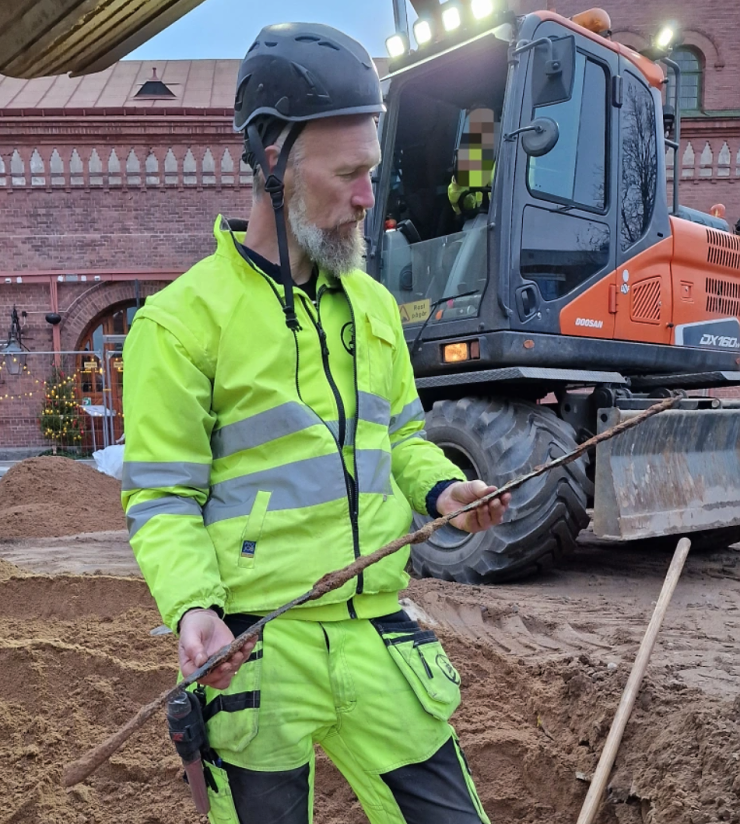A tall man's long sword under the floor of a medieval monastery
Categories: Nálezy nejenom s detektorem ve Skandinávii
On 12 December, an important medieval grave was discovered in Halmstad on the west coast of Sweden. It contained a 130 cm long sword with the remains of a man with a very unusual height of over 190 cm. The sword blade itself is over a metre long and in excellent condition.
The discovery was made in the historic square of Lilla Torg, which in the 15th century belonged to the grounds of the Franciscan monastery of St Anne. The first excavations on the site in 1932 revealed the remains of the convent kitchen and church. This year's excavations were aimed at exploring the monastery church, in which a grave with a sword was discovered under the floor of the south aisle. Two other graves were placed next to it - they belonged to an adult woman and a man.
The sword, once removed from the ground, was sent for preservation so that it could be studied and treated in a laboratory environment. Initial imaging of the find showed the blade to be decorated with two inlaid crosses, probably made of preciousmetal, which is what the field archaeologists suspected when they found the sword, according to the Halland Museum blog.
Experts say it is interesting that no other objects besides the sword were found in the grave, which is unusual in the context of medieval burials. The long sword found to the man's left is the only artefact of this type from a total of 49 graves examined at Lilla Torg. Finding swords in medieval graves is very rare. It usually indicates that the person buried with the sword belonged to the upper classes of society.
Halmstad gained its city rights in 1307, and its historic centre was established in the 1420s. At the time of its foundation it was part of the Kingdom of Denmark. St. Anne's Monastery was built between 1494 and 1503 thanks to a gift of a very valuable silver plate from Christina of Saxony, then Queen of Denmark. The monastery was closed by the city magistrate in 1531 and its property was later used for various purposes. For example, it became a hospital and even an armoury. The remains of the monastery were destroyed in a fire in 1619, which devastated most of the town at the time.
The discovery of the sword in Lilla Torg confirms that St. Anne's Church was used (among other things) as a burial place for persons of noble birth during the 35 years under the Franciscan Order.
Roman Nemec
Sources: kulturmiljohallandblogg.com, thehistoryblog.com, museumhalland.se

Archaeologist Eirik Johansson of the Bohusläns Museum holds a medieval sword he found during an archaeological survey of Lilla Torg in Halmstad

X-ray image of the sword

detail of the gold inlaid cross

a photograph of the grave where the sword was found. The image shows the skull and upper arm of the buried man. The sword was placed on his left side, where the hilt is preserved.

one of the two decorative crosses of the sword

the surviving parts of the sword blade and the wooden hilt were 1,3 metres long at the time of discovery.

The three tombs examined in the south aisle of the church Behind the tombs, the south foundation wall of the church can be seen.
The article is included in categories: